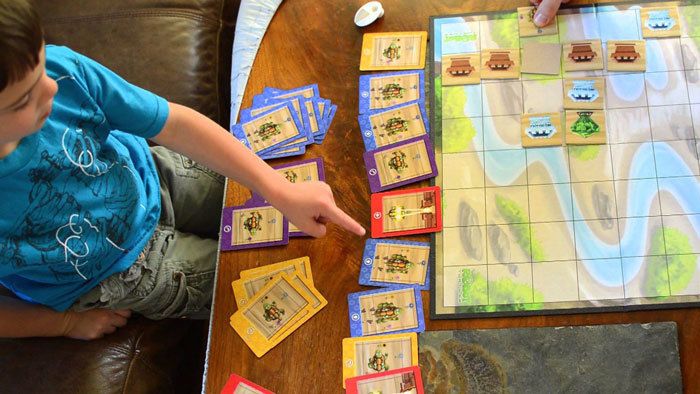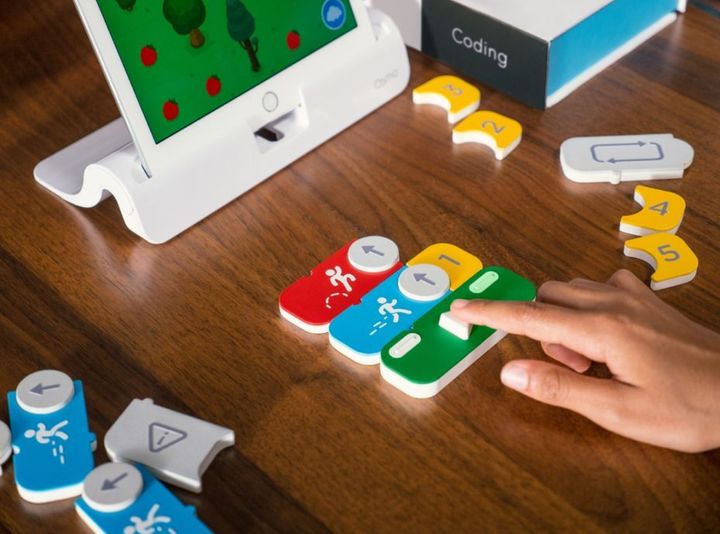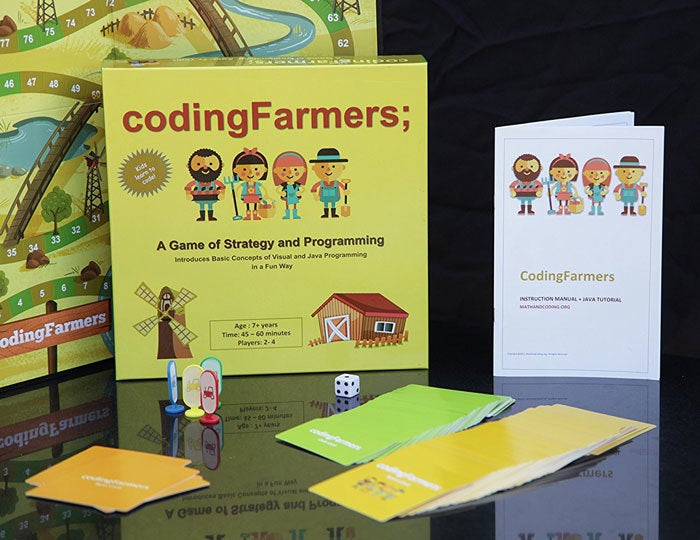When you hear the word " coding" or "programming" what comes first to your mind may be a picture of a nerd sitting in front of a laptop with multiple screens around him and typing like crazy. Or you may be thinking of languages like Java, JQuery, Swift or such jargons. But the concept of coding goes much beyond knowing the languages of programming. It's more about logical thinking, sequencing, cause and effect, focus and patience.
It's actually about some of the basic skills that helps a person in problem solving and decision making. So, if you are thinking, "I will introduce these toys only if my child takes an initiative to know more about coding", then you might want to re-think because by imparting the basic concepts of coding, you are actually imparting some basic life skills that they need to succeed in life... Of course there are other methods to teach these concepts to kids. But these toys are more like a fun way to learn these skills.
On that note, let's now share some cool toys that teach kids the basic concept of coding.
Code-a-pillar

This toy suitable for kids of age 3 to 8 years helps to develop basics of problem solving and sequencing. It is made of 8 segments that can be interconnected through USB port and each segment has a unique command icon on top of it. Kids can arrange them in different ways to direct the caterpillar to move in the programmed route.
Robot Turtles

Designed by a former Google Programmer, Robot Turtles is a fun board game that the family can play together. It's suitable for kids of age four and above and will requires adults involvement.The objective of the game is the players have to get their turtles to the gems that are placed in different positions on the board by navigating through a maze.The player ( the child) has to direct (write code) the adult to navigate to the gem using the cards that contains specific instructions like take left, move a step forward etc. Each players will have to overcome different obstacles on the path to reach their target. While smaller kids give one card at a time to the parent, older kids can make the entire sequence that contains instruction on how to reach the destination. Principles like sequencing, executing ideas with limited resources, debugging etc are imparted through this game.
Code Monkey Island

The object of this board game is to collect as many bananas as possible. But the journey is governed by ins and outs of coding that one has to learn to have the mind set of a programmer.
In the game that takes 45 minutes, each player takes a card that has an instruction on how to move the monkey. The cards are of 2 types- a conditional card and a count rule card. A conditional card is one like, " if a monkey is on the tree, move 10 spaces." While a count card is like " For every monkey in the tree, move 3 spaces." Thus children learn concepts of adaptation, strategic thinking and application of conditional statement.
This fun board is recommended for kids aged 8 years and above.
Osmo Coding Set

Unlike the three former games, this one is screen based. You need an iPad with camera to play it and unlike Robot Turtles and Code Monkey Island, this game requires close to no parental involvement.
The game consists of physical tiles that has to be used to control the movement of Awbie, the game character that loves Strawberries. The child has to arrange the command blocks in sequences in order to make Awbie walk, run, jump and shake the tree. Suitable for kids aged 5-12 years, this game encourages problem solving and logical skills.
Little Codr

Kids love to boss around their parents. With this game, kids have to create instructions using the set of cards given to get the parents( or friends) move to a particular destination in a particular route. There are three set of cards which can be used to add more complexity to the game as the child grows. The mission cards gives them complex tasks, the lab cards is for adding more variations to the mission and the action card are the ones that has to be sequenced to get the parent moving. Through this game, basics of logic, experimentation, debugging and collaboration are adapted for kids of age 4-8 years.
Bee bot

Bee bot is an award winning programmable toy that moves as per the instruction entered by the child. It has on it buttons to move front, back, left and right and also a go and clear button. Kids can press the buttons repeatedly and give a series of instructions before pressing "Go" to see the bug following the programmed route to reach destination chosen. This game is suitable for kids aged 3 and above.
Puzzlets

The storyline of this game is to collect as many water droplets as possible to extinguish fire in the island and collect puzzle pieces to Cork the volcano opening. This game has to be connected to a tab, iPad or laptop and by placing the tiles in the tray, the player can instruct the character to move. It isn't just boring up and down movements, but rather, you can program to make loops and other complicated moves to help the character manevour the obstacles.
This game that focuses on computational thinking and problem solving skills is designed for children above the age of 6.
Coding Farmers

Coding Farmers is a board game that exposes kids as young as seven to Java programming language. The game is played with dice and action cards that has instructions both in English as well as Java. Kids start relating the action to the language and as they become fluent with the Java, they can eliminate the English instructions and play just with the Java instruction cards.
Wowwee Coji

What makes this game fun is that you can program Coji the robot using emojis. Using the free app, kids can control Coji and play games where coji has to move avoiding obstacles. Emojis like up and down makes the robot move accordingly and the ones like boat will make it move over water in the game. Kids learn order of operations, logic and problem solving by playing games through coji.
Hello Ruby Adventures in Coding

Unlike the rest of the entries in the list, this one is a book!
Meet Ruby—a small girl with a huge imagination, and the determination to solve any puzzle. As Ruby stomps around her world making new friends, including the Wise Snow Leopard, the Friendly Foxes, and the Messy Robots, kids will be introduced to the fundamentals of computational thinking, like how to break big problems into small ones, create step-by-step plans, look for patterns and think outside the box through storytelling. Then, these basic concepts at the core of coding and programming will be reinforced through fun playful exercises and activities that encourage exploration and creativity.
(This post was originally published in I Want That Momma on 9th January 2017.)
